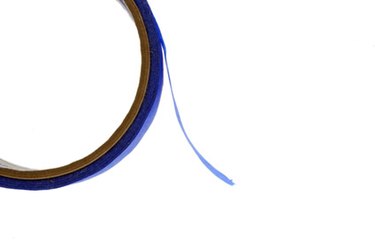Things You'll Need
Water-based degreaser
Coarse sponge
Rags
Towels
Professional painter's tape
Heavy-duty fabric drop cloths
Galvanized metal-etching spray primer
Spray enamel

Before you paint nickel-plated metal, you must prepare the surface for paint adhesion. Nickel plating is a durable, nonporous surface. This makes it a poor candidate for painted finishes. Before the nickel plating will accept paint, it requires pre-treatment with a special acidic primer, formulated with the ability to etch durable metallic surfaces. Once you've properly conditioned the nickel-plated metal, it can be painted. Apply a durable enamel to avoid flaking. Apply the enamel in the correct manner so you won't be disappointed in the final finish.
Step 1
Clean the nickel-plated metal with a water-based degreaser, using a coarse sponge. Rinse the degreaser off with wet rags and dry the metal with towels.
Video of the Day
Step 2
Protect portions of the metal you do not want painted by covering them with painter's tape. Protect flooring with drop cloths.
Step 3
Coat the nickel plating with a galvanized metal-etching spray primer. Spray in a side-to-side, sweeping motion. Maintain an 8-inch distance between the nickel plating and the spray nozzle at all times. Wait four hours for the metal to dry.
Step 4
Coat the primed nickel plating with spray enamel. Spray in a side-to-side, sweeping motion, keeping the spray nozzle at least 8 inches from the nickel plating. Wait four hours for the enamel to dry.
Warning
Do not prime over unwashed nickel-plated metal, or you may have problems with adhesion.
Do not paint directly over unprimed nickel-plated metal, or the finish will peel.
Do not use ordinary latex, acrylic or oil primers on nickel plating, or the finish will flake.
Video of the Day